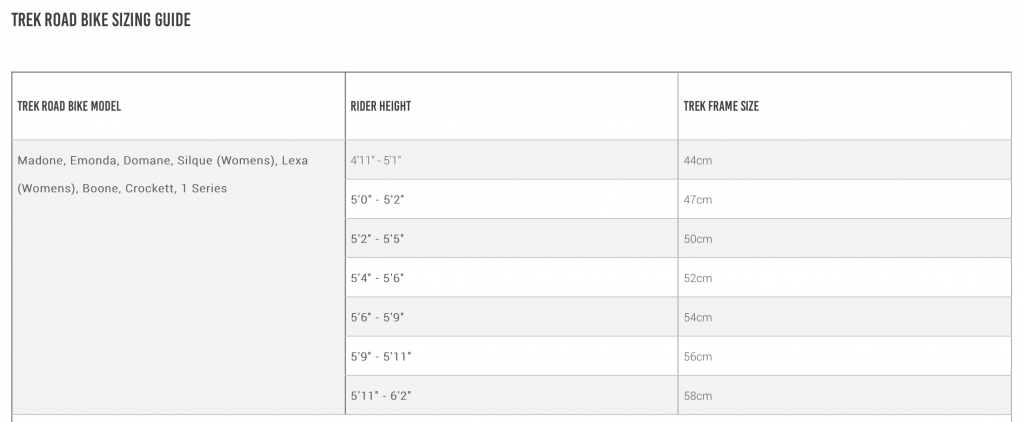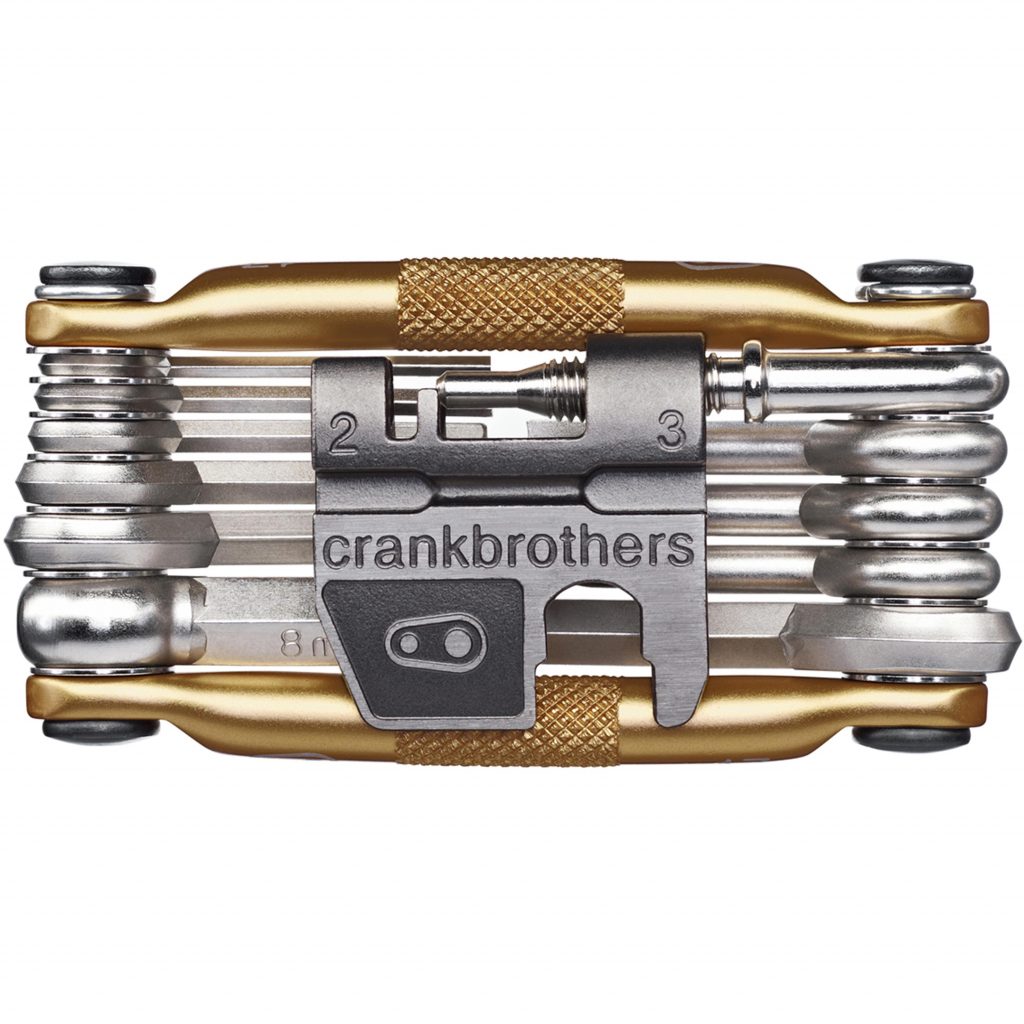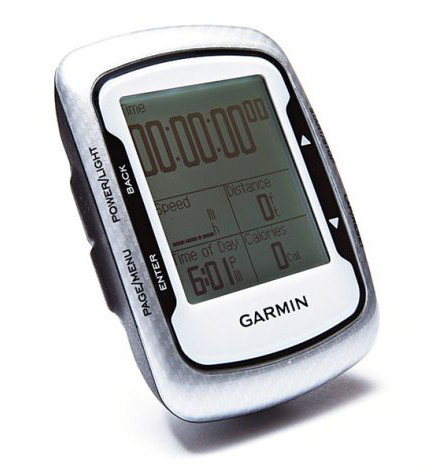What type of cyclist are you?
There are many types of cycling, and each type of cycling comes with their own types of bikes and enjoyment. This web page from CenturyCycles.com does an excellent break down. I love road cycling primarily because of its team work, speed, and relative simplicity in comparison to other forms of cycling. Of course different strokes for different folks. However on this post I am only going to discuss about road cycling since this is the basis of my own personal experience. Here are some fun times which I enjoyed with our local chain gangs.
Getting a bike
Before getting a bike, you will need to know about your own personal dimensions, such as your height, inseam, foot size, etc. These measurements are critical for determining the size of the bike that will work best for you. Different brands can have different sizing metrics. Here is a more in depth article at LiveStrong.com discussing fitting to a Cannondale bike. Below is a table selecting a Trek road bike frame size by your height.

A proper fit is important as you can potentially be riding your bike for hours at a time. An improper fit will result in discomfort and potentially repetitive, body injuries.
Once you know the type and size of the bike that you want to get, you will now have to decide whether to get something new or used. Stay away from buying bikes at major merchandising stores like Costco, Walmart, and Canadian Tires. Those bikes have inferior components and they will not work well and will break within a few rides.
Budget may be an issue here. Be prepare to spend $1500 to $3000 for either a high end Aluminum frame bike or a low end Carbon bike. As a sample, here is a sample link to a local bike store at D’Ornellas listing road bikes that are less than $2000 in price.
Alternatively, you can tap into the local used market. Here is an example from Facebook, a $1200 2015 Specialized Allez Comp. Kijiji is another popular site for locally used road bikes. I personally stay away from eBay, but you may find that more convenient.
I think both Aluminum or Carbon frames have their merits, and I would stay with at least a Shimano 105 group set or higher. The group set is the collection of components on the bike that relates to its transmission system, which is everything from brakes, chain rings, gear shifting, head sets, etc. Here is a quick guide to the different hierarchy of the Shimano road group set from Road.cc.
Pedals and shoes

For road cycling all of us use clipless pedals. There are two main types, the road racing (on left) and mountain biking style pedals. I personally use a pair of Shimano Ultegra Pedals. Pedal selection can be an exercise in finding religion. Instead of me going into details here, I will refer to this wonderful article from the New York City Bike Shop.
The only thing I would stress is that going clipless is a must if you want to keep up with a group. Your choice of the clipless system is really up to you.
Get kitted up
Cycling requires proper attire, primarily for safety, comfort and temperature control. Of course different weather will require different kits (the type of clothing you wear). Things to consider are:
- Helmets
- Cycling Gloves
- Cycling Jersey
- Cycling Bibs
- Socks
If you decide to ride in the cold, then different linings, jackets, and long tights will also have to be considered.
When considering helmets, you want one that is locally certified for safety. Everyone rides with a helmet now and you will get yelled at on the road if you do not ride with a helmet. Other considerations when selecting helmet is fit, ventilation, visibility, weight, and the style you like. When it comes to bike attire MEC is a good reference for goods and information. Here is short article on helmets.
Personally I am definitely on the practical (or cheap) side when it comes to attire. I prefer fit and function over style and looks. If something works and is cheap then I am all in. I do not really care about brands and colours. I am not keen on any bling bling effects. Having said that, if you do ride in the dark it may be good to invest in some glow and bright clothing, so that you are more visible on the road. I like the sun and try to do all of my riding when it is light and dry.
Accessories
These are the things to have on your bike or on you when you go out for a ride. They fall into two general categories, items that keep your body fuelled and comfortable, and items that look after your bike in case of mechanical issues or road side mishaps and emergencies.

For myself, I usually bring some snacks along for the ride just in case I get into a hunger spell. For rides longer than 1.5 hours, I start bringing high carb content food such as a peanut butter and jam sandwich (cut into bite size units) or a banana. I also love these Endurance TAP maple syrup gels. I usually have one or two in my back pockets.
Aside from energy food, you will also need lots of water to remain hydrated. This means water bottles and bottle cages that fit on your bike to carry them. Everyone is different. You will have to experience how much water you will need. I typically carry a single bottle for rides between 1 to 1.5 hours, and 2 bottles for longer rides. For rides longer than 2.5 hours, I will need to seek an on route water source (eg. a convenience store) to refill the bottles. The amount of water you bring is also weather dependent. You will find that more water is required on more hot and humid days.

For the bike, a multitool to tighten, loosen, or fix odds and ends; one or preferably two spare inner tubes – when (and not if) you get a flat. For quick fills in seconds, a CO2 canister system is the way to go. However, you get infinite air if you use a hand mini pump. Make sure you buy one that can sustain high pressure (90+ psi). A patch kit is great when you run out of spare tubes. I have been on rides when I got more than 3 flats!
Last but not least is a fully charged cell phone so that you can call for help as a last resort or communicate with your riding buddies in case you get separated.

There are other items that people buy to measure their performance and accomplishments. Things like a cycling computer with GPS, a speedometer, and a power meter. I will not go into details here. I personally own a Garmin Edge 500 and it has served me well. All this hard work must be recognized somehow! It also helps to pace a ride.
Your local bike store, or Mountain Equipment Co-op is a good start to procure these accessories.
Join a group
Road cycling is exhilarating, exciting, and will certainly make you more healthy. It gives you more energy when you are not riding, and increase your sense of accomplishment. However, cycling on the road can also be dangerous. In the end, you cannot control who is sharing the road with you and their level of maturity and competence. It is always safer to ride with a group so that you have a bigger presence on the road and you look after each other. So once you are all geared up, join a local club or find some riding buddies in your neighbourhood.
Cycling is always changing. Keep up with the Global Cycling Network YouTube channel.
Improve your riding skills by being attentive, tune your riding skill by learning from each other. Before you know it your group quickly turns into a coherent team. You will pleasantly discover a priceless sense of fulfillment and enjoyment once you are a part of an integral group. You will get there before you know it!
